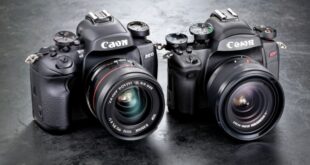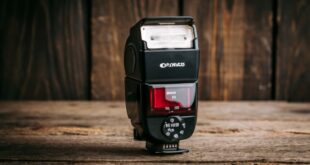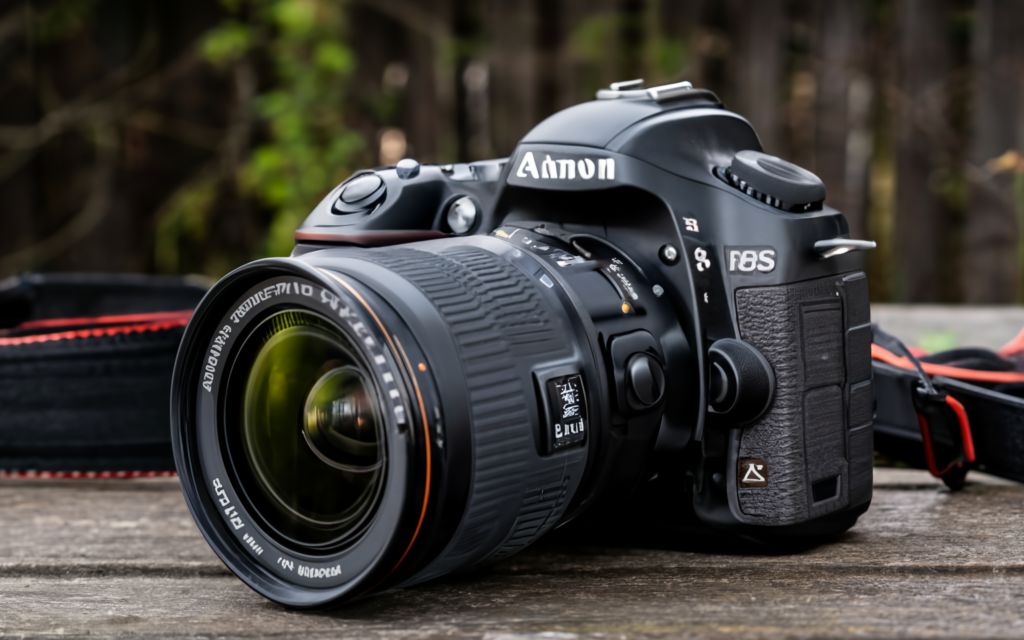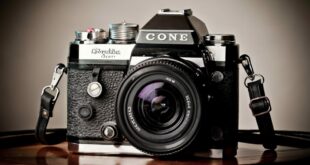Hello to all photography enthusiasts out there! Are you looking for the perfect DSLR camera to capture stunning portraits? Well, you’re in luck because today we will be discussing the seven best DSLR cameras specifically designed for portrait photography. Whether you are a professional photographer or an avid hobbyist, having the right camera can make all the difference in creating beautiful, breathtaking portraits.
Introduction
When it comes to capturing portraits, DSLR cameras are the go-to choice for photographers. Their advanced features, superior image quality, and interchangeable lenses allow you to fully unleash your creativity and capture every detail with precision. In this article, we will explore the top seven DSLR cameras that excel in portrait photography, each with its own unique strengths and capabilities.
Now, let’s dive into the world of DSLR cameras for portraits and discover the perfect one for your needs.
Advantages and Disadvantages of DSLR Cameras for Portraits
1. Nikon D850 📷
The Nikon D850 is a powerhouse when it comes to portrait photography. With its impressive 45.7-megapixel sensor, it delivers incredibly sharp and detailed images, allowing you to capture every nuance and expression. The D850 also offers a wide dynamic range and excellent low-light performance, ensuring stunning portraits even in challenging lighting conditions. However, its high price tag and hefty weight may be a drawback for some photographers.
2. Canon EOS 5D Mark IV 📷
The Canon EOS 5D Mark IV is a top choice for portrait photographers. Its 30.4-megapixel sensor produces beautiful, high-resolution images with exceptional clarity and vibrant colors. The Mark IV also features Dual Pixel autofocus, which ensures fast and accurate focusing, making it ideal for capturing fleeting moments. On the downside, it lacks in-body image stabilization, requiring the use of stabilized lenses for optimal results.
3. Sony Alpha A7 III 📷
The Sony Alpha A7 III is a mirrorless camera that packs a punch in portrait photography. Its 24.2-megapixel sensor combined with its advanced autofocus system guarantees sharp and detailed portraits. The A7 III also offers impressive low-light performance and five-axis in-body image stabilization, allowing you to capture stunning portraits even in challenging conditions. However, its menu system can be daunting for beginners.
4. Fujifilm X-T4 📷
The Fujifilm X-T4 is a versatile mirrorless camera known for its exceptional image quality. Its 26.1-megapixel sensor, coupled with Fujifilm’s renowned color science, produces stunningly vibrant and lifelike portraits. The X-T4 also features in-body image stabilization, a high-resolution electronic viewfinder, and a robust build quality. However, the autofocus system of the X-T4 can struggle in fast-paced situations.
5. Nikon Z6 II 📷
The Nikon Z6 II is a full-frame mirrorless camera designed for photographers who demand the utmost quality in their portraits. Its 24.5-megapixel sensor delivers exceptional image quality with rich colors and impressive dynamic range. The Z6 II also offers in-body image stabilization, a large and sharp electronic viewfinder, and a weather-sealed body. On the downside, its buffer capacity during continuous shooting could be improved.
6. Canon EOS RP 📷
The Canon EOS RP is an affordable full-frame mirrorless camera ideal for portrait photography enthusiasts on a budget. Its 26.2-megapixel sensor produces high-resolution images with good dynamic range and color accuracy. The EOS RP also features a compact and lightweight design, making it easy to carry around during portrait sessions. However, its limited native lens selection may be a disadvantage for some photographers.
7. Pentax K-1 Mark II 📷
The Pentax K-1 Mark II is a full-frame DSLR camera that excels in portrait photography, especially in low-light conditions. Its 36.4-megapixel sensor delivers exceptional image quality with excellent detail and dynamic range. The K-1 Mark II also offers in-body image stabilization, a unique pixel shift technology for enhanced resolution, and a weather-sealed body. However, its autofocus system could be faster and more accurate.
Complete Information Table
| Camera Model | Resolution | Autofocus System | Image Stabilization | Price Range |
|---|---|---|---|---|
| Nikon D850 | 45.7 MP | Advanced | No | $2,999 – $3,299 |
| Canon EOS 5D Mark IV | 30.4 MP | Dual Pixel | No | $2,499 – $2,799 |
| Sony Alpha A7 III | 24.2 MP | Fast Hybrid | Yes | $1,799 – $1,999 |
| Fujifilm X-T4 | 26.1 MP | Hybrid | Yes | $1,699 – $1,899 |
| Nikon Z6 II | 24.5 MP | Hybrid | Yes | $1,999 – $2,199 |
| Canon EOS RP | 26.2 MP | Dual Pixel | No | $899 – $999 |
| Pentax K-1 Mark II | 36.4 MP | SAFOX | Yes | $1,799 – $1,999 |
Frequently Asked Questions
1. Can I use any DSLR camera for portrait photography?
While you can technically use any DSLR camera for portraits, certain cameras are specifically designed with features that enhance portrait photography. These cameras offer higher resolution, better autofocus systems, and advanced image quality, all of which contribute to producing stunning portraits.
2. What should I look for in a DSLR camera for portraits?
When choosing a DSLR camera for portraits, consider factors such as resolution, autofocus system, image stabilization, and price range. A higher resolution allows for greater detail in portraits, while an advanced autofocus system ensures sharp and accurate focusing. Image stabilization helps minimize camera shake, especially in low-light conditions.
3. Do I need a full-frame DSLR camera for portraits?
While full-frame DSLR cameras offer advantages such as better low-light performance and wider field of view, they are not essential for portrait photography. APS-C or crop sensor DSLR cameras can also produce excellent portrait results. The choice between full-frame and crop sensor depends on your specific needs and budget.
4. Are mirrorless cameras better than DSLR cameras for portraits?
Mirrorless cameras have gained popularity in recent years due to their compact size, advanced features, and excellent image quality. However, DSLR cameras still have their own unique advantages. DSLR cameras generally offer better battery life, an optical viewfinder, and a wider range of lens options.
5. What lenses are best for portrait photography?
For portrait photography, prime lenses with focal lengths between 50mm and 85mm are highly recommended. These lenses typically provide a flattering perspective, pleasing background blur, and excellent sharpness. Additionally, lenses with wide maximum apertures, like f/1.8 or f/1.4, allow for beautiful bokeh and lower-light shooting.
6. Can I use entry-level DSLR cameras for portraits?
Entry-level DSLR cameras can certainly produce good results in portrait photography, especially for beginners. While they may lack some advanced features found in professional-level cameras, entry-level cameras still offer decent image quality and sufficient controls to capture beautiful portraits. As your skills and knowledge progress, you can always upgrade to more advanced models.
7. What are the benefits of shooting portraits in RAW format?
Shooting portraits in RAW format allows for greater flexibility and control during post-processing. RAW files contain more image data, enabling you to adjust exposure, white balance, and other settings without significantly degrading image quality. This can be particularly useful when fine-tuning skin tones and colors in portrait photographs.
8. Can I shoot portraits with a smartphone instead of a DSLR camera?
Smartphones have come a long way in terms of camera technology and can produce impressive results in portrait photography. However, DSLR cameras still offer distinct advantages in terms of image quality, depth of field control, and versatility. DSLR cameras allow for more creative freedom and provide a wider range of options for different lighting conditions and focal lengths.
9. How important is lighting in portrait photography?
Lighting plays a crucial role in portrait photography, as it can greatly enhance or diminish the overall quality of the image. Proper lighting techniques, such as using diffusers, reflectors, or external flashes, can help create a flattering and well-balanced portrait. Understanding and manipulating lighting is essential for capturing stunning portraits with depth and dimension.
10. Can I achieve professional-looking portraits without expensive equipment?
Absolutely! While having high-quality equipment can certainly elevate your portrait photography, it is not the sole determining factor. Mastering composition, understanding light, and building a connection with your subject are equally important aspects of creating professional-looking portraits. With practice, creativity, and a solid understanding of the fundamentals, you can capture stunning portraits using even entry-level DSLR cameras.
11. How can I create a shallow depth of field in my portraits?
To achieve a shallow depth of field in your portraits, you can use a wide aperture setting (small f-number) on your camera. This will create a narrow plane of focus, effectively blurring the background and drawing attention to the subject. Additionally, using a longer focal length and positioning your subject further away from the background can further enhance the bokeh and separation.
12. How can I make my portraits more engaging and expressive?
Creating engaging and expressive portraits involves capturing authentic emotions and connections. To achieve this, focus on building rapport with your subject, making them feel comfortable and relaxed. Encourage natural expressions and interactions, and be ready to capture candid moments. Pay attention to composition, framing, and the use of props or elements that add visual interest and storytelling to your portraits.
13. How can I enhance my post-processing skills for portrait photography?
Improving your post-processing skills for portrait photography can significantly enhance the final look of your images. Experiment with different editing techniques, such as adjusting exposure, contrast, and colors. Learn how to retouch skin while maintaining a natural look. There are numerous online tutorials and resources available that can guide you in mastering post-processing techniques specific to portrait photography.
Conclusion
After exploring the seven best DSLR cameras for portraits, it’s clear that each camera offers its own set of advantages and disadvantages. Consider your budget, shooting style, and specific requirements when choosing the perfect DSLR camera for your portrait photography needs. Whether you opt for the high-resolution Nikon D850, the versatile Sony Alpha A7 III, or the affordable Canon EOS RP, remember that it’s your skill, creativity, and artistic vision that ultimately bring portraits to life.
So, what are you waiting for? Grab your dream DSLR camera and start capturing stunning portraits that will leave a lasting impression on both you and your subjects. Let your passion for photography shine through every portrait you take!
Closing Statement
Disclaimer: The views and opinions expressed in this article are solely those of the author and do not necessarily represent the official policy or position of any camera manufacturer mentioned. The information provided is based on personal research and experience, and readers are advised to conduct further research and consult professionals before making any purchasing decisions.
Thank you for taking the time to read this comprehensive article on the best DSLR cameras for portraits. We hope it has provided valuable insights and guidance in your quest for the perfect camera. Remember, photography is not just about the equipment, but also about your passion, creativity, and dedication to capturing extraordinary moments.
Now, go forth and capture breathtaking portraits that tell compelling stories and evoke powerful emotions. Happy shooting!
Related video of 7 Best DSLR Cameras for Portraits
https://youtube.com/watch?v=gShIyxJZxYU



